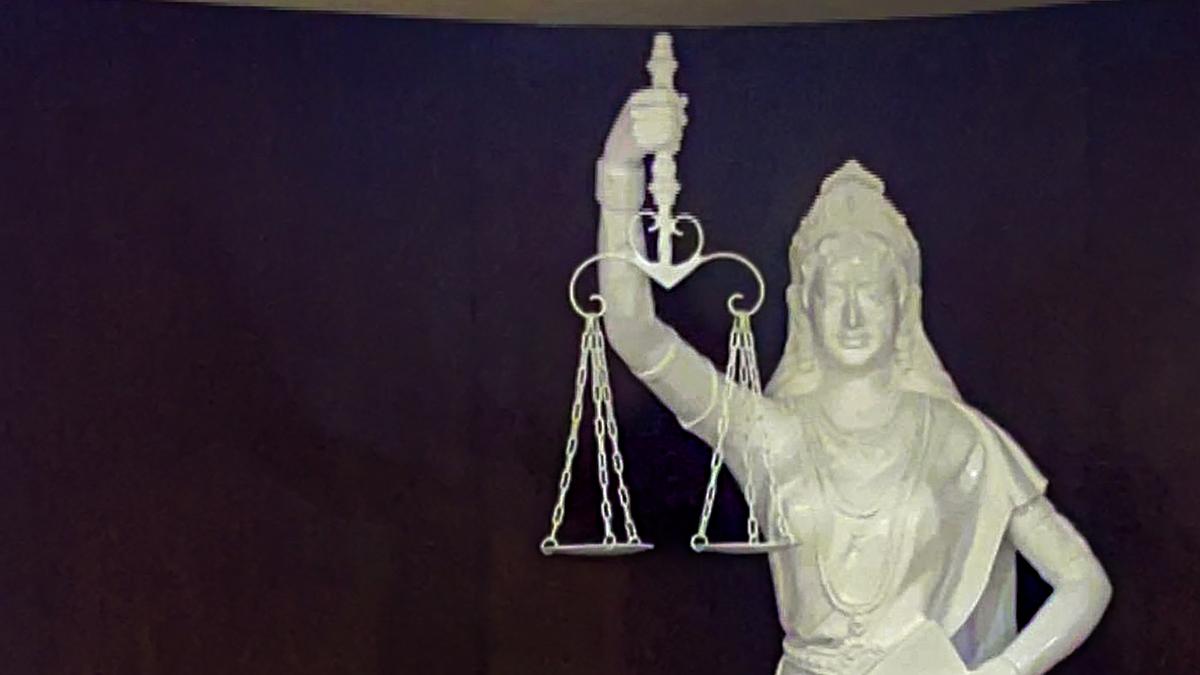Table of Contents
Introduction
The article focuses on the newly installed statue of Justice (Justitia) at the Supreme Court of India, which has sparked public debate. This statue stands six feet tall, is dressed in a sari, and holds a set of scales in one hand and the Indian Constitution in the other. Unlike the traditional blindfolded depiction of Justice, this statue has open eyes. Former Chief Justice of India (CJI) D.Y. Chandrachud, who introduced the statue in October 2024, explained that it symbolizes how the law is not blind but instead sees and treats everyone equally.
What is Justitia?
Justitia, or Lady Justice, is a symbolic figure representing fairness, law, and morality. She is often depicted as a woman holding scales to symbolize balance and impartiality, a sword to represent authority and justice, and sometimes a blindfold to signify objectivity and equality, ensuring decisions are made without bias or favoritism. The figure originates from ancient Roman, Greek, and Egyptian traditions, where justice was considered a virtue essential for maintaining harmony in society.
Why is Justitia Important?
Justitia, or Lady Justice, is important because she symbolizes the key principles of a fair legal system. Her scales represent weighing evidence impartially, her sword shows the power to enforce laws, and the blindfold signifies fairness without bias, treating everyone equally regardless of status, wealth, or identity. This symbol reminds people that justice must be neutral, objective, and accessible to all. It is a powerful visual representation of the values that guide the legal process, helping to build trust and confidence in the rule of law.
Article Explanation
The depiction of Justice has changed over time. In ancient Roman, Greek, and Egyptian cultures, Justice was often shown with open eyes, symbolizing fairness and the ability to judge clearly. The blindfold appeared later, in the 15th century, and was initially seen as negative, implying confusion or bias. However, by the 16th century, the blindfold came to represent impartiality and fairness, signifying that Justice treats everyone equally without being influenced by appearances.
The design of the new Justitia in the Supreme Court is different and appears inspired by a mural inside the court. This mural, which is not accessible to the public, shows a sari-clad Justice holding scales and gazing at them thoughtfully. It is made up of porcelain marble tiles in shades of white, yellow and green, depicting Gandhi, the Dhamma Chakra and the goddess of justice.
. She wears jewelry and a crown, holds a set of scales near her face appearing as a devi (goddess), very much like this statue, and gazes at the balance with a contemplative expression. This thoughtful pose is compared to the style of old paintings like those by Johannes Vermeer, where the focus is on calm reflection. The goddess in the mural also holds a book, which some interpret as the Indian Constitution.
The mural connects traditional Indian imagery with modern ideas of Justice. Its design highlights cultural and philosophical themes, blending Indian heritage with the ideals of fairness and equality. However, the article questions whether such depictions unintentionally reflect biases or exclusions tied to caste, gender, or religion.Some view it as a symbol of India’s cultural heritage, while others see it as potentially biased due to its resemblance to a Hindu goddess. On social media, some have expressed concerns that the open eyes could imply biases based on caste, religion, or political affiliations.
The article also raises important questions about how Justice should be represented today. Should Justice symbols reflect values like equality, fairness, and inclusion? Should they challenge biases and promote trust in the judiciary? The writer suggests that modern representations of Justice should focus on ideas like feminism, anti-caste equality, and secularism while remaining free from any form of discrimination.
In summary, the new statue of Justice has brought up different interpretations and sparked debate. While it aims to represent openness and fairness, it has also raised concerns about whether it truly reflects equality and impartiality. This discussion highlights the need for thoughtful, inclusive designs that symbolize Justice in a way that resonates with everyone.
.
.
.
..join our telegram channel for regular updates of The Hindu Epaper Editorial Explanation-https://t.me/Thehindueditorialexplanation
The Hindu Epaper Editorial Explanation given by Hello Student is only a supplementary reading to the original article to make things easier for the students.
In conclusion, preparing for exams in India can be a daunting task, but with the right strategies and resources, success is within reach. Remember, consistent study habits, effective time management, and a positive mindset are key to overcoming any academic challenge. Utilize the tips and techniques shared in this post to enhance your preparation and boost your confidence. Stay focused, stay motivated, and don’t forget to take care of your well-being. With dedication and perseverance, you can achieve your academic goals and pave the way for a bright future. Good luck!
The Editorial Page of The Hindu is an essential reading for all the students aspiring for UPSC, SSC, PCS, Judiciary etc or any other competitive government exams.
This may also be useful for exams like CUET UG and CUET PG, GATE, GMAT, GRE AND CAT
To read this article in Hindi –https://bhaarat.hellostudent.co.in/

